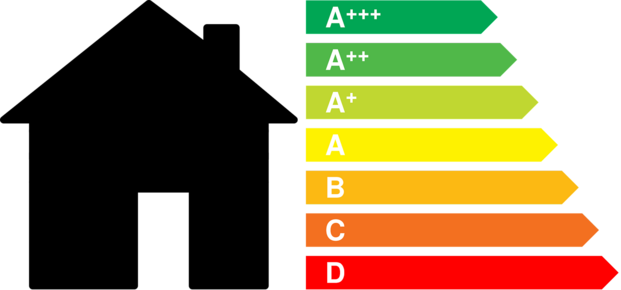
For many of us, being more energy efficient in everything we do is a priority. We drive less, keep our appliances in good shape, turn off lights when not in use, and minimize HVAC system use, among other things. So, when planning on building a home, it would be only natural to want to be energy efficient with that, as well. If it’s a habit and commitment you’ve made in your day-to-day life, then you should try to make your most significant investment with the same standards.
Being energy efficient with your home building comes with a host of benefits. For one, it’s better for the environment. Energy-efficient homes are made with recycled materials and try to use space in a way that is easy to heat and cool efficiently. They often also put a premium in their designs on fresh air and natural light, which are healthier for your mind and body. The fact is that energy-efficient homes are more affordable in the long run. You’ll save money on your utility bills because of the lower emissions and power use. There are many types of energy-efficient homes that you can build. Here are a few of the most popular.
Solar Efficient Homes
The sun is the most renewable energy source, and solar power is becoming common in new builds. As climate change becomes more of a threat, solar power will become more critical for our safety and survival. Using this energy source also protects the owner from fluctuations in power costs. They can be off the grid and safe from blackouts as well. Solar power will keep costs low as energy costs rise, so your budget isn’t broken.
It’s a good rule of thumb to expect a solar-powered home to provide about two-thirds of your power requirements, including heating. If you need to, you can connect to the power grid or alternative energy sources, such as burning natural wood pellets. Fossil fuel use is a significant concern, and solar panel home designs ensure no need to burn any. The hot water tank uses a booster heater. You may pay upfront for these energy-efficient components, but in the long run, you will save money on your bills.
Energy Plus Homes
Energy plus home generates more electricity than what is used. This is due to the photovoltaic panes installed on the home’s exterior. They also convert sunlight to electricity, making homeowners less reliant on the electrical grid.
The difference between these homes and solar-powered homes is that an energy-plus home will return its extra electricity to the power grid. This provides even more financial incentives for the owner of the home. The average energy-plus home produces up to 1700 kilowatts more than it consumes annually. These homes also typically use a solar thermal system for heating, which is also energy efficient.
Insulated Concrete Form (ICF)
Insulated concrete form (ICF) involves using reinforced concrete as insulation. The concrete used in ICF construction is made with permanent thermal insulation. It goes in floors, walls, and even the room. These homes are built with a formwork system, so all the sections are locked together. The forms are then filled with concrete to form the walls and the floors.
The thermal insulation makes ICF homes very energy efficient. In addition, it provides superior insulating properties, so you use less heating and cooling energy. Most homes’ problems are that insulation breaks down over time, and gaps can form in windows and doors. This allows air to escape, and your HVAC system has to work harder to keep up. With ICF, you will have no such issues, as it’s durable and strong.
Self-Sufficient Homes
Self-sufficient homes offer the dream for eco-conscious homeowners. You can get your water, heat, and electricity without accessing any exterior services. While you’ll probably want to remain connected to your utilities in case of a problem, you certainly won’t have to, and you may never need them. For one, electricity is generated through solar panels and wind turbines. That way, there is always a source, even when you go through long periods without sun. Large high-performance rechargeable batteries store the power from the panes and the wind turbines, so there’s always something available.
Water comes from a well and rainwater. It is filtered through systems built into the home and disposed of through a septic field. Homes like this are also built and outfitted with energy-efficient appliances and light fixtures to maximize electricity use.
Passive Energy Efficiency
With a passive energy-efficient house, you can save up to 90% on your heating and cooling bills. They are made with a focus on insulation and natural light so that you can rely less on your HVAC system and still be as comfortable as possible. They usually feature triple-glazed insulated windows, which draw in the heat from sunlight but do not allow your conditioned air to escape, or the exterior air to leak. They also feature sensors that recycle the air regularly, so you’re never left with stale, unhealthy air. A passive energy-efficient home is simultaneously economical, good for the environment, and healthier for you and your family.
As someone looking at building a house, you want it made to your preferences and priorities in every way. You want the suitable materials, the right look, and the right feel to your home. When it comes to being eco-friendly, one of the most important factors is being energy-efficient. Technology and techniques have evolved and improved, so you have many options. Use these techniques to build a home that is good for the environment and your budget.




 POSTED BY
POSTED BY 

